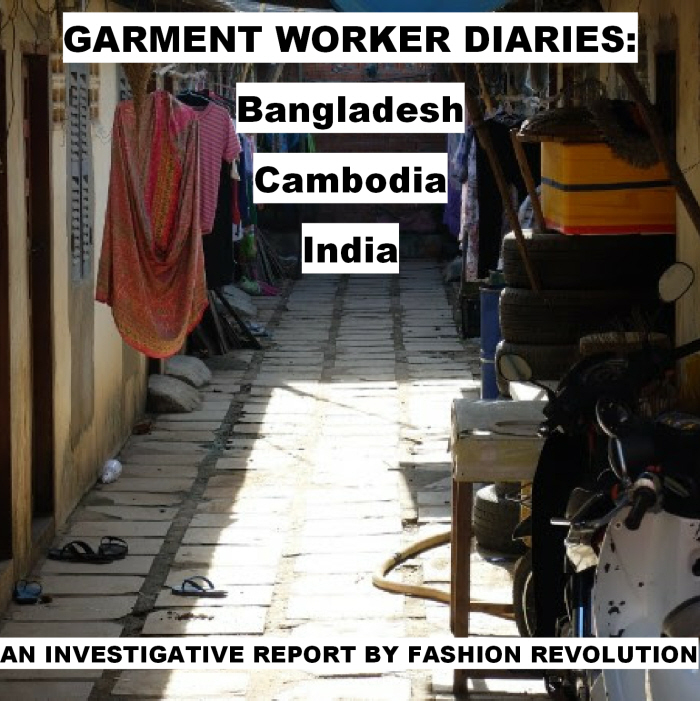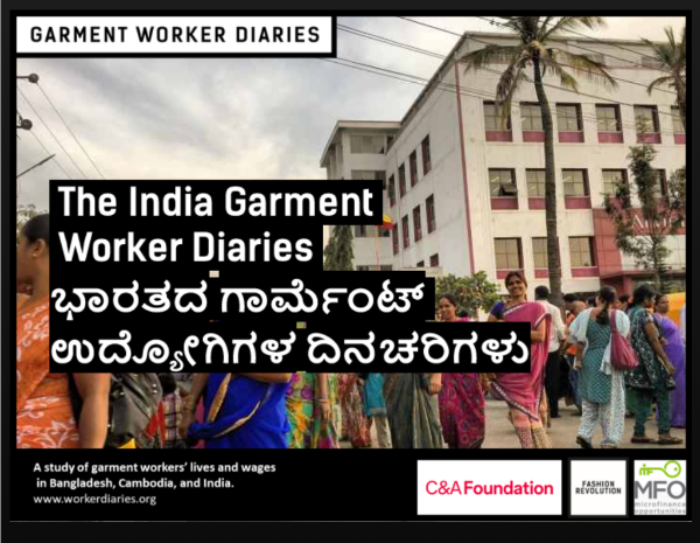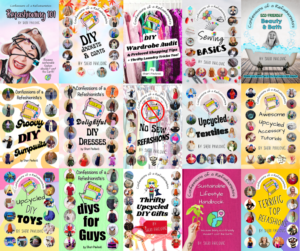The Garment Worker Diaries project undertaken by Fashion Revolution gives the most comprehensive picture yet of the living and working conditions faced by female garment workers in Bangladesh, Cambodia and India. Over 12 months, researchers visited 540 workers at their homes to learn about what they earn and buy, how they spend their time each day and what their working conditions are like.

Explore the garment worker diaries and discover the stories of the people making your clothing and just how they manage to survive the difficult combination of low wages and economic uncertainty.
Cambodia’s workers sought overtime hours to boost their incomes, but in many cases were not paid a legal wage for these hours. On average, they worked 48 hours a week and earned an hourly rate of 3,500 riels (the equivalent of 2.53 USD in purchasing power equivalency). Despite earning the minimum wage and supplementing their income with overtime hours, most workers still faced financial strain, and at certain points throughout the year, this resulted in limited access to quality food and medical care.

India’s workers – a sample of export-oriented factory employees in the southwest of Bangalore – typically earned the legal minimum wage or higher and paid into pension and state insurance programmes. On average, they worked 46 hours a week and earned an hourly rate of 39.68 INR (the equivalent to 2.27 USD in purchasing power equivalency). They were often exposed to verbal abuse by their supervisors and relied heavily on income from their husbands or other household earners to meet their financial obligations, but lived in comparative comfort to workers in Bangladesh or Cambodia.
Bangladesh’s workers earned the least per hour of workers in the three countries—about half what the women in the other two countries earned. On average, they worked 60 hours a week and earned an hourly rate of 28 taka (the equivalent of 0.95 USD in purchasing power equivalency). They earned less than the minimum hourly wage 64 per cent of the time and there was significant evidence to suggest that the more they worked the less they earned. Outside of work, men controlled earnings and were spent on basics like food and rent and rarely improved a household’s quality of life.
Check out all of the garment worker diaries right here.
I’ve awoken to find polite and (incredibly) rude variations of this question in my inbox too many times to count so let’s dive right in with my response.
Disclaimer: I am not at all an expert on the big business of fast fashion however I am a concerned consumer who has chosen to learn & share as much as I can through my own personal experiences & the wealth of resources available online.
My ambition to inform & influence others to step away from unethically (& immorally) produced products is the driving force that motivates me to continue providing fabulous free eco-fashion/accessory/decor tutorials, ethical outfit inspiration and helpful thrifting tips on my Confessions of a Refashionista as well as contributing & sharing my creative skills throughout the online maker world.
Find all of my ethical fashion articles here then check out my E-courses right over here:
and transform your entire wardrobe for pennies with my groovy CoaR tutorial E-book collections right here:











